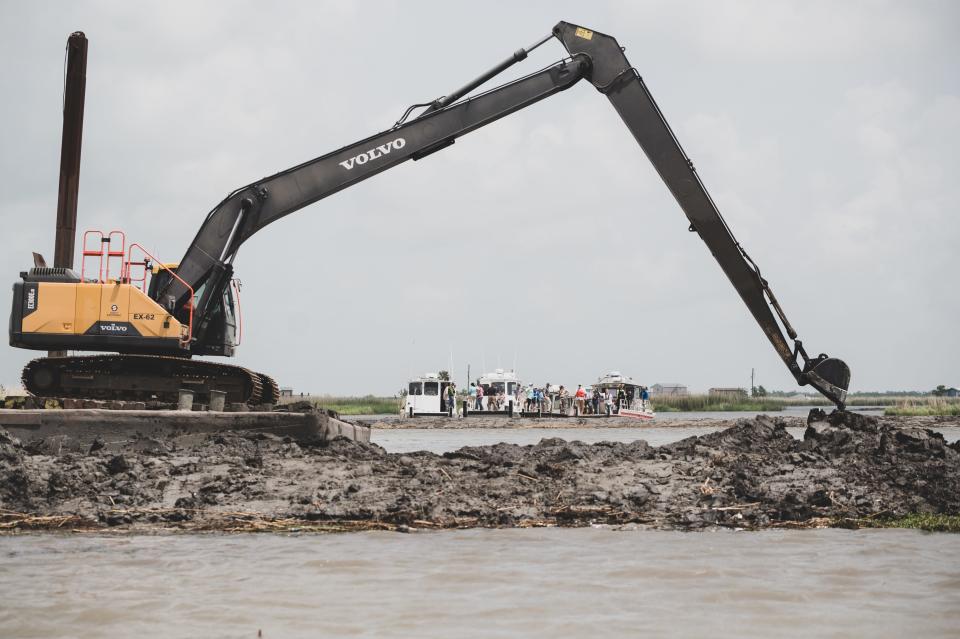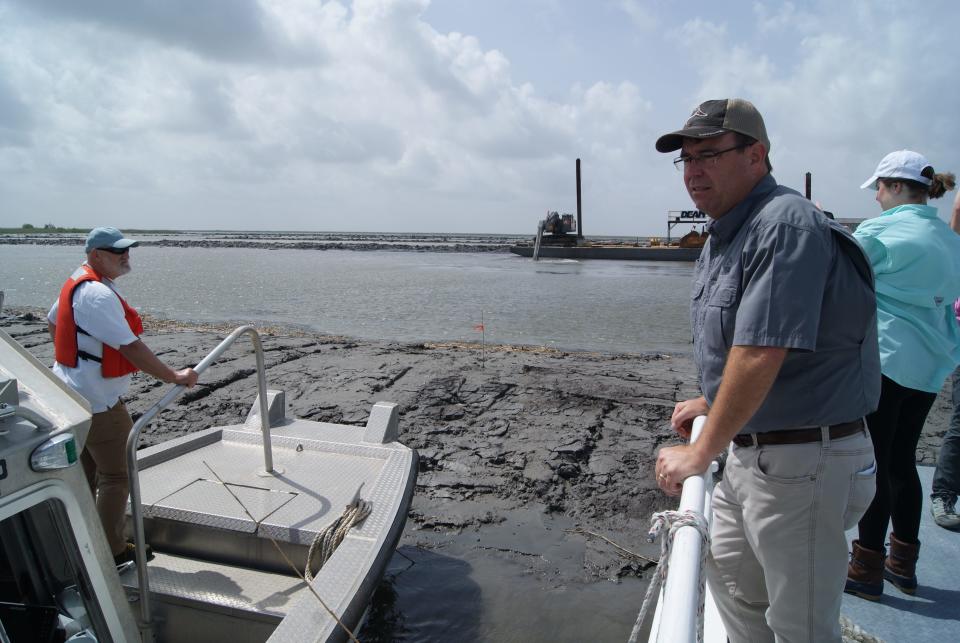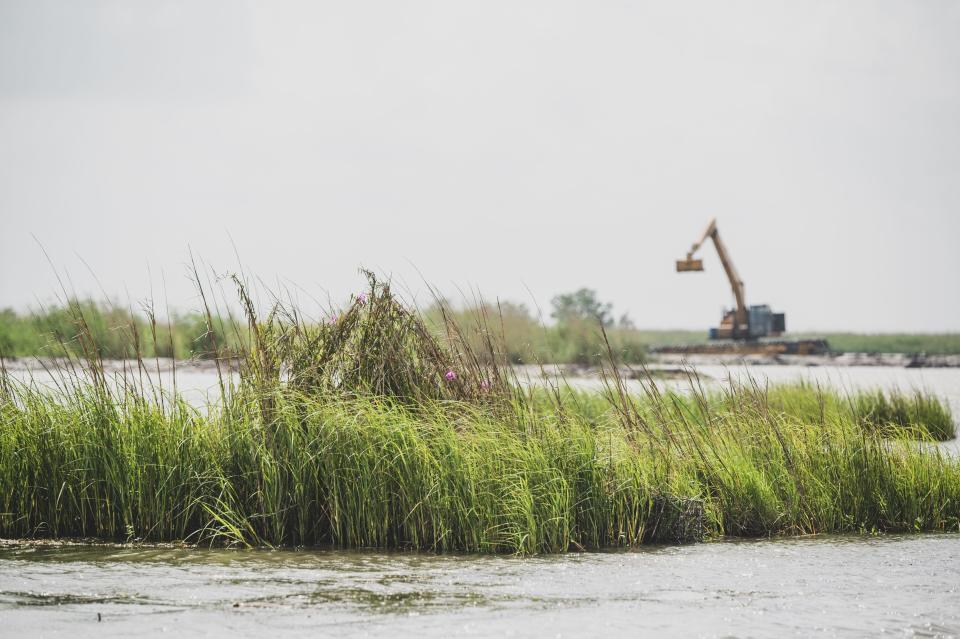These marsh-building projects near Houma aim to prevent flooding and feed the ducks
A pair of Terrebonne Parish coastal-restoration projects — one complete and another underway — aim to benefit two groups: people and ducks.
The projects use terraces designed to slow wave action from the Gulf of Mexico that is eroding marshes roughly 10 miles south of Dularge.
Land created by the structures will help blunt storm surges and their impact on neighboring communities. And the grasses and other vegetation will provide food for ducks and a habitat for the insects and marine creatures they also feed on.

That habitat has been shrinking persistently as Louisiana's coast continues to erode and sink into the Gulf.
Read this: Louisiana utility board irate over Entergy CEO's Colorado vacation during Hurricane Ida
Each project, coordinated by nonprofit Ducks Unlimited, will cost about $2.3 million.
The Louisiana Coastal Protection and Restoration Authority provided $2 million. Another $2 million came from federal grants designated for environmental work through the from North American Wetlands Conservation Act. ConocoPhillips put up $100,000 and Chevron spent $200,000.
"Projects such as these are truly a partnership effort. Thanks to the continued support from both public and private partners, including energy industry leaders, DU's critical conservation work never stops," said Karen Waldrop, the group's chief conservation officer. "The Gulf Coast of Louisiana is a critical piece to the conservation puzzle."
Other partners include Terrebonne and Lafourche Parish governments, the U.S. Fish and Wildlife Service and North American Wetlands Conservation Council.
Representatives of the agencies and groups took a boat trip Tuesday to view the Voss Canal and East Raccourci Bay terraces.

"We design them to not erode away," said Beau Theriot, an engineering technician for Ducks Unlimited. "On the leading edge of the terraces that are exposed to the open water we build a shelf. On the front, we put a bunch of plants on it so it grows up, so it has more roots on the ground. ... And the waves kind of roll up on it instead of pound."
The terraces consist of several V-shaped mounds roughly 350 feet apart, similar to small levees, that block oncoming water. The space between each creates tiny pockets of vegetation for wildlife to feast in. The dirt is gathered from alongside the mounds, under the water, and the trenches created from collecting the sediment form tiny habitats for fish.
"We're trying to knock down the wave action in these ponds because part of what tears it up is that wave sits there and chews on that marsh," Theriot said. "So you put this terrace field here and now you block all that wave action. As far as the ducks go, you've got protection from the little levees and you've got food inside of them."
Previously: Can Louisiana legislation prevent repeat of deadly Hurricane Ida nursing home evacuation?
The Voss Canal terraces, completed in 2020, benefit 450 acres of wetlands, officials said.
The East Raccourci Bay terraces, now underway, should be completed in nine to 12 months.

On Tuesday, cranes shoveled dirt from under the water to the top of the mounds. The boats pulled against one of the terraces, tied together and people could walk freely between the boats. The area of water and wetlands, known by locals as Lil' Deuce, is roughly 7 miles from the Gulf and 30 miles southwest of Houma.
"Louisiana's coastal wetlands are critical natural resources and the region's economic driver," said Terrebonne Parish President Gordy Dove. "By working together, organizations like Ducks Unlimited, parish and state officials, and some of the region’s largest employers – including the energy industry – can fortify our communities and protect our livelihoods for generations to come. I’m proud to witness all of the progress these groups have made together in this critical region of our state."
This article originally appeared on The Courier: Two projects near Houma aim to prevent flooding and feed the ducks

